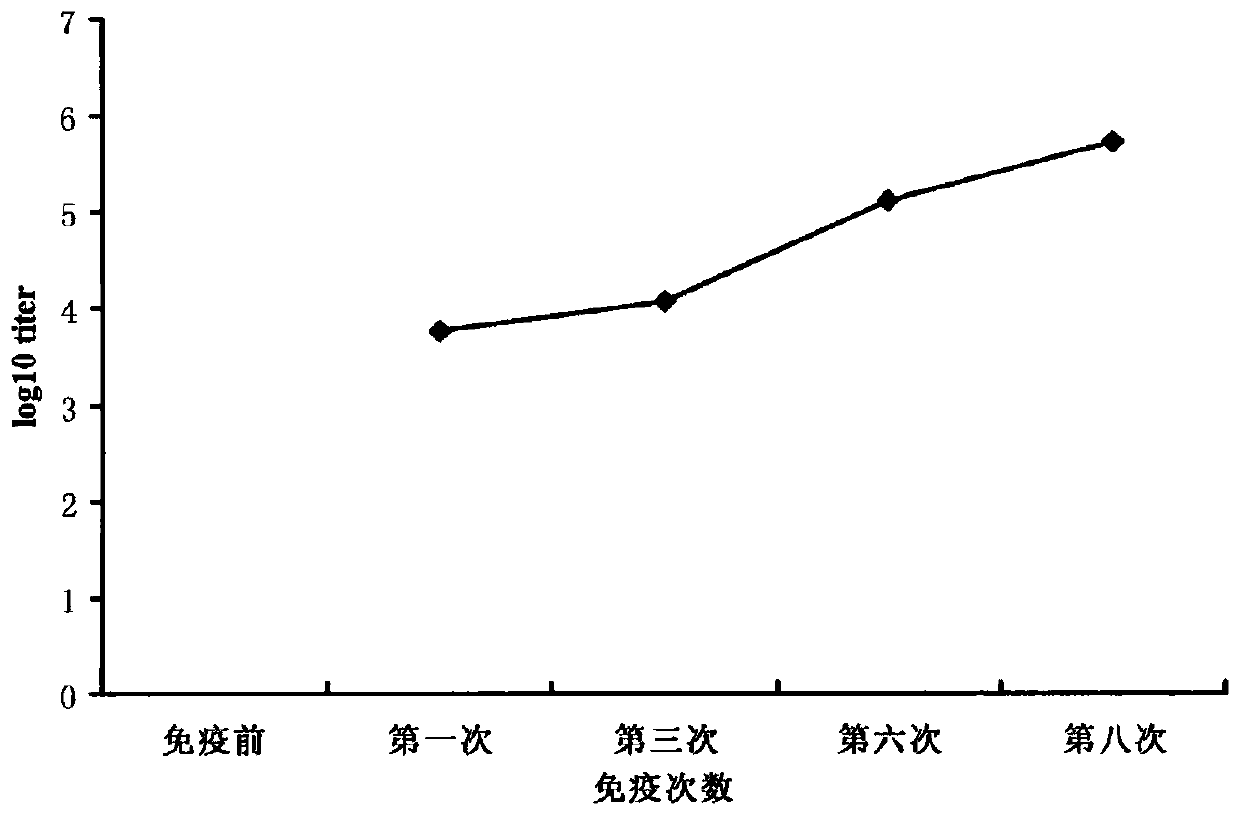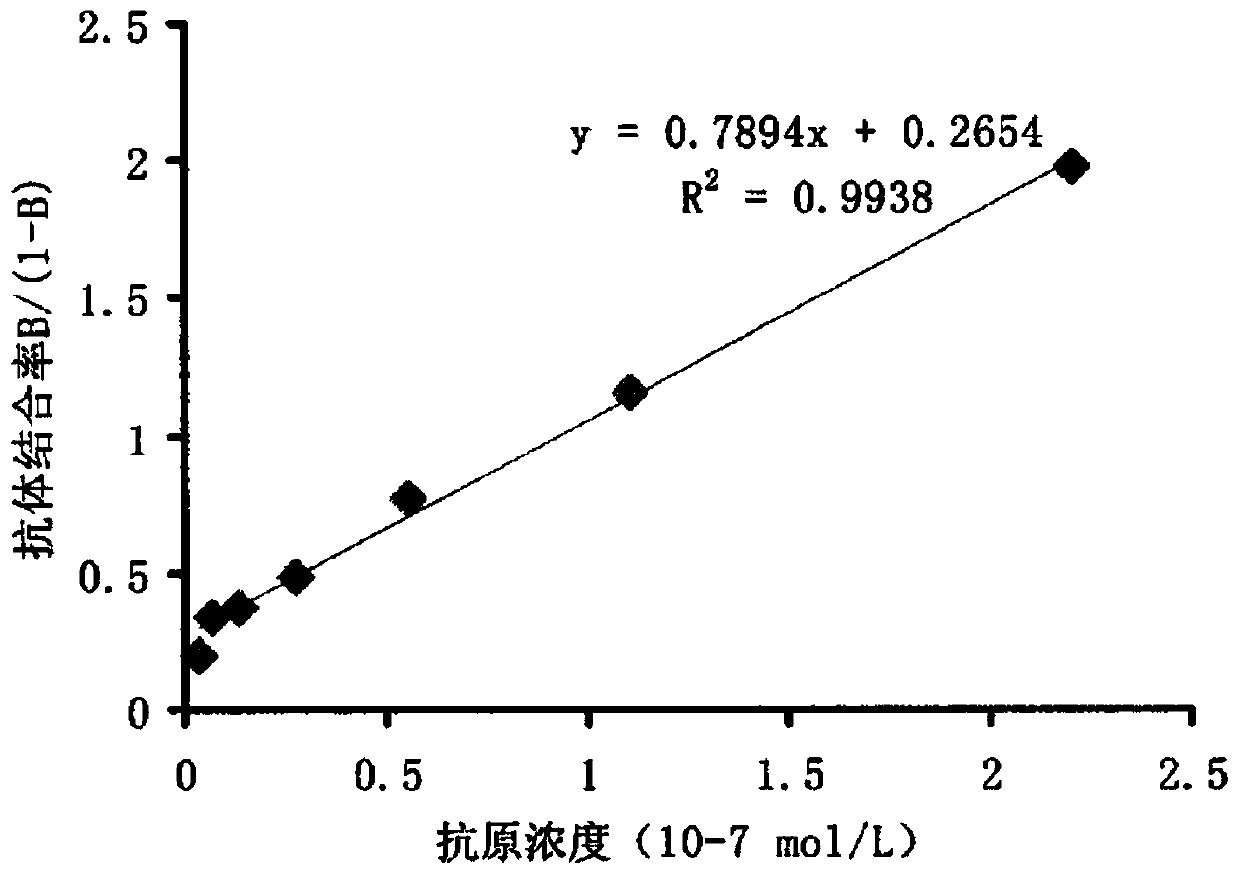Tau resisting antibody and application thereof to treating Alzheimer disease and traumatic brain injury
An antibody and antigen technology, applied in the treatment of Alzheimer's disease, traumatic brain injury, and the field of anti-Tau antibodies, can solve problems such as shedding, depolymerization, and decreased microtubule stability, and achieve the effect of improving symptoms
- Summary
- Abstract
- Description
- Claims
- Application Information
AI Technical Summary
Problems solved by technology
Method used
Image
Examples
Embodiment 1
[0025] Example 1: Preparation of anti-tau protein antibody hybridoma
[0026] In order to obtain an anti-tau protein antibody that can specifically bind to tau protein that occurs in neurological diseases such as traumatic brain injury and Alzheimer's disease, PHF-tau, which is closely related to the disease state, was selected as an antigen to prepare an anti-tau protein antibody.
[0027] The PHF-tau protein is prepared and purified by a known method, that is, the postmortem cortical tissue of a patient with Alzheimer's disease is selected, and 5 mg of the frontal cortex is mixed with 8-10 times the volume of cold buffer H at 1000 rpm using a tissue homogenizer. (10 nM Tris, 800 mM NaCl, 1 mM EGTA and 10% sucrose, pH 7.4), and the homogenized material was centrifuged at 27000 g for 20 minutes in a high-speed centrifuge. Discard the pellet and adjust the supernatant to a final concentration of 1% (W / V) N-lauroyl sarcosine and 1% (V / V) 2-mercaptoethanol and incubate at 37 °C f...
Embodiment 2
[0052] Embodiment 2: Construction of Alzheimer's disease model
[0053] In order to study the effect of anti-tau protein antibody on hyperphosphorylated tau protein under physiological state, a mouse model of Alzheimer's disease was constructed.
[0054] BALB / c mice were anesthetized by intraperitoneal injection of 2% pentobarbital sodium (40mg / kg), fixed on the brain stereotaxic instrument, and exposed to the skull by midline incision of the skull. Locate the basal nucleus, drill open the dry bone with a dental drill, and slowly inject Aβ within 5 minutes with a 1 μl micro-injector injection needle 25-35 and ibotenic acid (IBO) (both purchased from sigma company) mixed solution 1μl, the needle was retained for 10min, after the injection was completed, the needle hole was closed with local soft tissue, the skin was sutured, and penicillin sodium salt 50,000 u was intramuscularly injected after the operation. 1 time per day, continuous injection for 3 days. A successful mouse...
Embodiment 3
[0057] Example 3: Effect of anti-tau antibody on phosphorylated tau protein in Alzheimer's disease mice
[0058] Based on the results of the previous examples, monoclonal antibodies E2, B8 and A2 were selected to study their effect on reducing phosphorylated tau protein in Alzheimer's disease mice.
[0059] As in Example 2, the Alzheimer's disease mouse model and the blank group mouse model were constructed, and 40 Alzheimer's disease model mice were selected as the experimental group, randomly divided into 4 groups, 10 in each group, and injected through the tail vein respectively. Give normal saline, monoclonal antibodies E2, B8 and A2 (500 μg / mouse); select 10 normal mice and 10 blank group model mice to give normal saline (500 μg / mouse) respectively through tail vein injection, experimental small Rats had free access to food and water. The experimental group, the normal group and the blank group were administered every other day after the first administration, administere...
PUM
 Login to View More
Login to View More Abstract
Description
Claims
Application Information
 Login to View More
Login to View More - R&D
- Intellectual Property
- Life Sciences
- Materials
- Tech Scout
- Unparalleled Data Quality
- Higher Quality Content
- 60% Fewer Hallucinations
Browse by: Latest US Patents, China's latest patents, Technical Efficacy Thesaurus, Application Domain, Technology Topic, Popular Technical Reports.
© 2025 PatSnap. All rights reserved.Legal|Privacy policy|Modern Slavery Act Transparency Statement|Sitemap|About US| Contact US: help@patsnap.com



